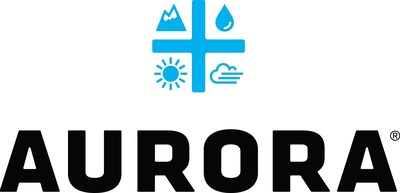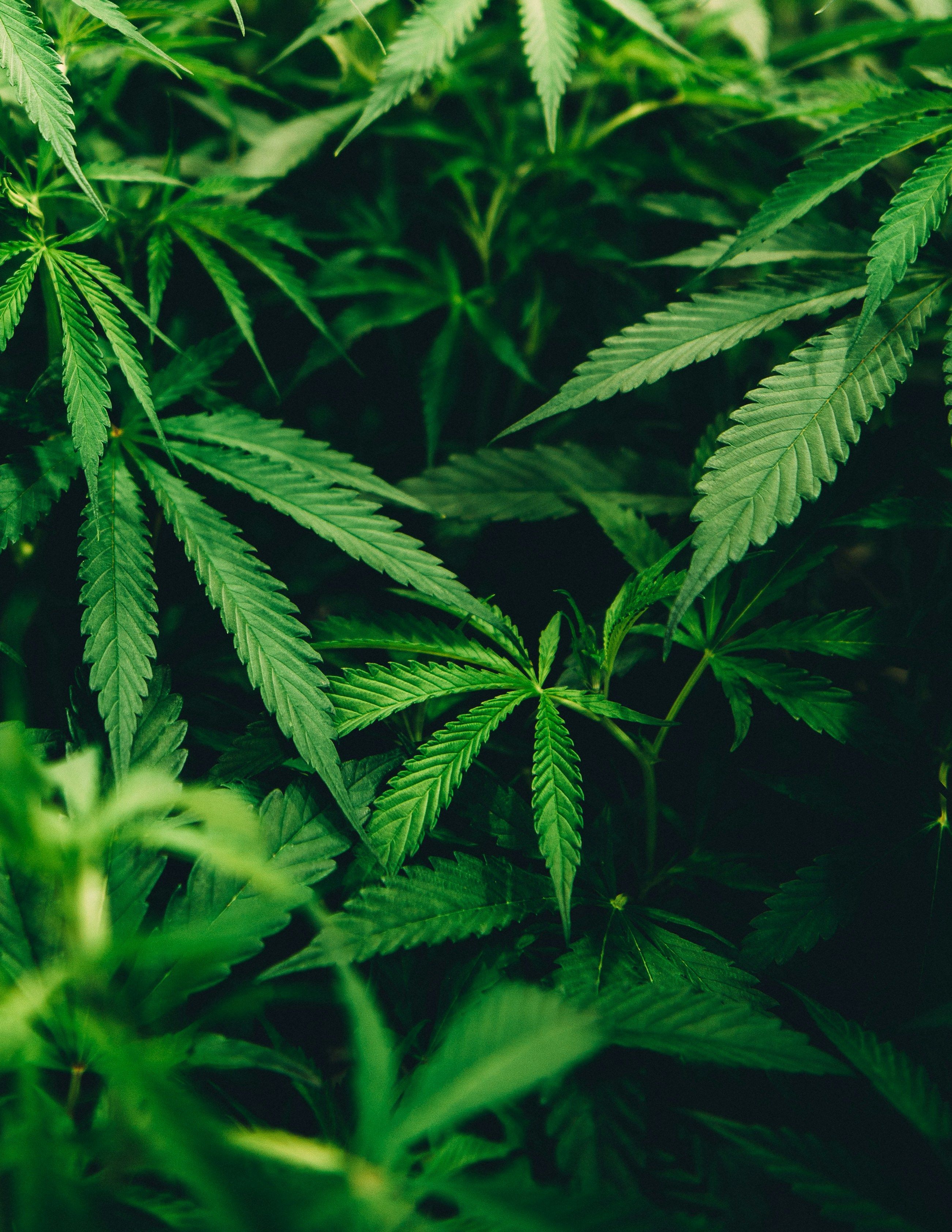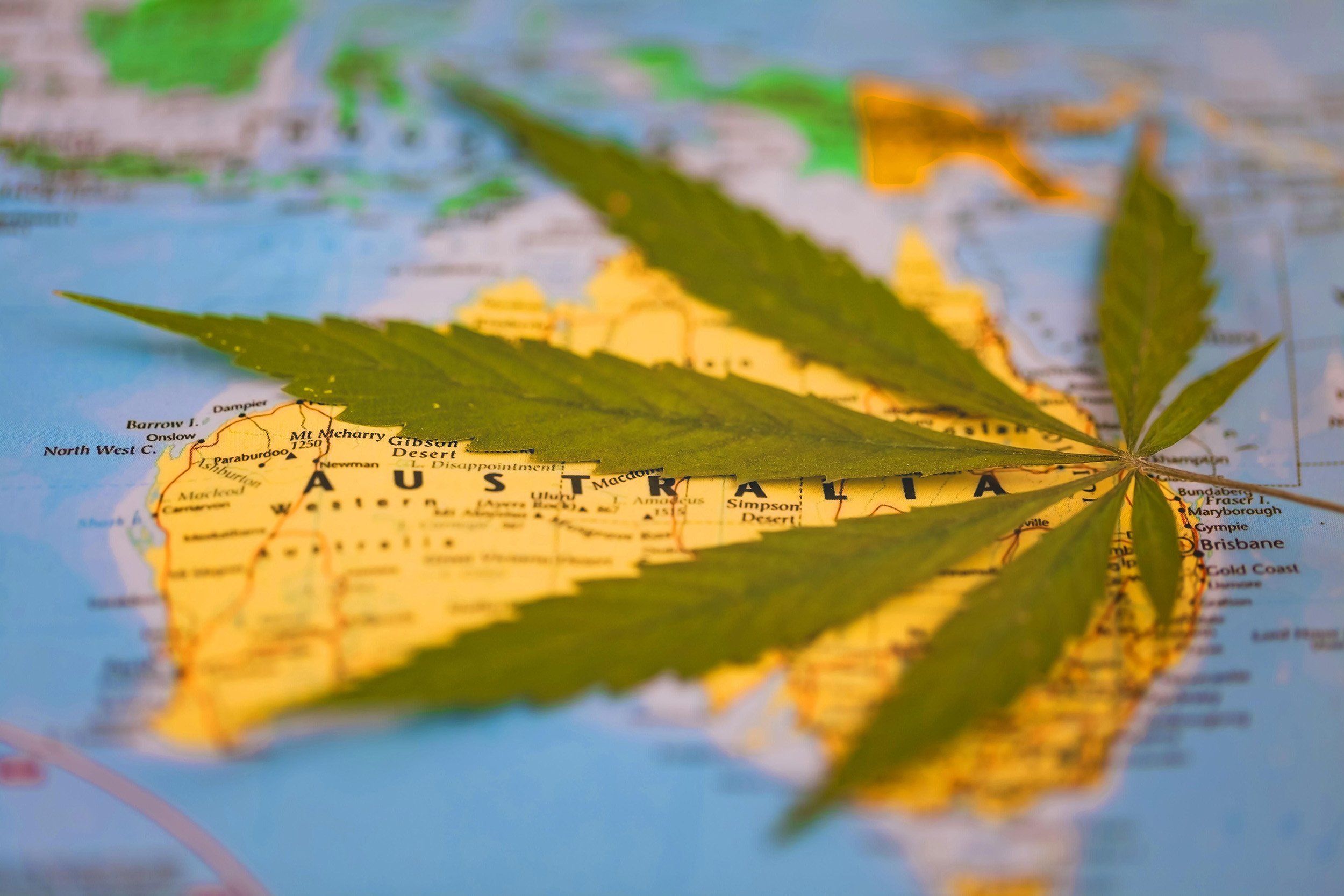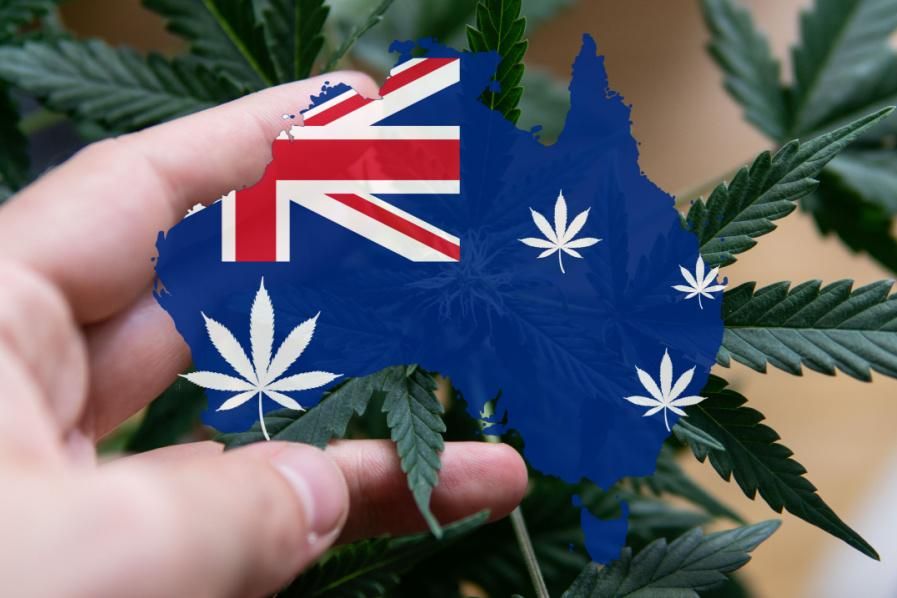- Increasing Original Target for Expense Savings; Management Now Expects $150 to $170 Million in Annualized Cost Savings by H1/2023 versus Stated Target of $60 to $80 Million
- Reiterating Adjusted EBITDA Profitability Run Rate by the End of Fiscal H1 2023
- Remains #1 Canadian LP in High Margin Global Medical Cannabis Revenues; International Medical Revenue Increased 55% from Q3 2021
- Strong balance sheet; Early Repurchase of $141.4 Million in Convertible Debt
Aurora Cannabis Inc. (the "Company" or "Aurora" ) (NASDAQ: ACB) (TSX: ACB), the Canadian company defining the future of cannabinoids worldwide, today announced its financial and operational results for the third quarter fiscal 2022 ended March 31, 2022 .
"We continue to steer our differentiated global cannabis business towards long term shareholder value creation. This is being accomplished through a sole focus on the most profitable growth opportunities, rationalization of our Canadian cost structure and disciplined use of capital. Our plan is working and we remain firmly on track to achieving a positive Adjusted EBITDA run rate by the first half of fiscal 2023. Today, we are announcing further cost savings which will enable us to increase our range of savings under our business transformation plan from $60 to $80 million to $150 to $170 million . Our balance sheet also remains among the strongest in the industry, enabling the repurchase of $141.4 million in convertible debt early, while also providing meaningful working capital to support organic growth and pursue strategic M&A, such as our recent acquisition of Thrive Cannabis," stated Miguel Martin , Chief Executive Officer of Aurora.
"During Q3, we continued focusing on our global medical cannabis business because it is both defensive and stable, with cash gross margins that exceed 60%. We were pleased to have experienced considerable top-line growth in this segment year over year, and with new international markets poised to open, our track record and ability to navigate complex regulatory environments position us ideally for a significant revenue opportunity globally. In terms of the Canadian adult-use market, we continue to adjust to current conditions, are excited for future contributions from the Thrive team, and are committed to a continuous stream of innovation, including advancing our premiumization strategy," he concluded.
Third Quarter 2022 Highlights
(Unless otherwise stated, comparisons are made between fiscal Q3 2022, Q2 2022, and Q3 2021 results and are in Canadian dollars)
Medical Cannabis:
- Medical cannabis net revenue 1 was $39.4 million , an 8% increase from the prior year period, delivering 78% of Aurora's Q3 2022 consolidated revenue and 92% of adjusted gross profit.
- The increase in revenue was driven by growth in the international medical business, up 55% year over year as the Company continued to develop new, high margin medical markets, but down 26% sequentially. The sequential revenue decrease was primarily a result of $8.5 million of net sales generated from our Israel supply agreement in the previous quarter. Excluding the impact of Israeli sales, net international medical revenue increased sequentially by $1.8 million and was driven by growth in key markets including Germany , Poland , the UK, and Australia .
- Adjusted gross margin before fair value adjustments on medical cannabis net revenue 1 was 64% compared to 63% sequentially and 53% in the prior year period. The year over year improvement was a result of an increase in international sales which yield higher margins and an overall reduction in production costs due to the closure of non-core facilities as part of our business transformation plan.
Consumer Cannabis:
- Consumer cannabis net revenue 1 was $10.3 million compared to the prior quarter net revenue of $14.4 million , with the decline due mainly to industry-wide pricing pressures across our portfolio and exacerbated by retail store closures in key provinces for the Company's premium offerings.
- Adjusted gross margin before fair value adjustments on consumer cannabis net revenue 1 was 29% versus 23% sequentially and 33% in the prior year period. The increase of 6% from Q2 2022 was driven by the Company's continuing shift toward a premium product portfolio.
Selling, General and Administrative ("SG&A"):
- SG&A, including Research and Development ("R&D"), was $39.5 million (excluding $2.0 million of restructuring related costs and $0.7 million of prior period employee-related accruals) versus $40.9 million in the prior quarter and $43.0 million in the prior year period, presented on a comparable basis. Q3 2022 SG&A is now at the lowest level in almost four years.
Consolidated:
- Q3 2022 total cannabis net revenue 1 was $50.4 million , down 17% sequentially. The Q3 2022 average net selling price per gram of dried cannabis 1 , excluding the effect of bulk wholesale sales, increased 20% to $5.41 from $4.52 in Q2 2022.
- Adjusted gross margin before fair value adjustments on cannabis net revenue 1 was 54% in Q3 2022 versus 53% in the prior quarter and 44% in Q3 2021. The increase in Adjusted gross margin compared to the prior year period is due to increased sales in our international medical markets which command significantly higher average net selling prices and margins.
- Adjusted EBITDA 1 loss declined to $12.3 million in Q3 2022 versus $9.0 million in Q2 2022 but narrowed from $20.9 million in the prior year period. The change from Q2 2022 was primarily driven by lower revenue that was partially offset by a decrease in SG&A, net of restructuring and one-time costs.
Operational Efficiency Plan, Balance Sheet Strength, & Cash Use:
Aurora has previously identified annualized cash savings of $60 million to $80 million and now expects to surpass the high end of this range with an additional $70 million to $90 million in savings by the end of H1 fiscal 2023, split evenly between costs of goods sold ("COGS") and SG&A, for a total of up to $170 million in cash savings under this transformation program. Projected COGS savings now include the closure of the Aurora Sky facility in Edmonton (previously announced to be operating at approximately 25% capacity), in keeping with our diversified business portfolio, prudent approach to capital allocation, and our strategy in the Canadian adult-use market to focus on higher margin premium categories. These cash savings will be reflected in our P&L either as they occur within SG&A savings, or as inventory is drawn down for production-related savings.
Resulting from these strategic changes, management concluded that the carrying value of goodwill in the Canadian market segment was impaired and that asset specific impairments were required for production facilities being made redundant. As a result of these decisions, Aurora recorded a number of one-time non-cash charges in Q3 2022 including a write down of goodwill of $741.7 million , asset-specific impairments of $176.1 million , and an inventory provision charge of $63.6 million .
At March 31, 2022 , Aurora had $480.6 million of cash, including $50.7 million in restricted cash, no secured term debt, and access to US$887.6 million of capital under its shelf prospectus, including an at-the-market (ATM) facility, of which currently US$187.6 million remains under the program. As disclosed previously, management considers the ATM to be available for strategic purposes.
During Q3 2022, Aurora repurchased a total of $13.4 million ( US$10.6 million ) in principal amount of convertible debt at a total cost, including accrued interest, of $11.8 million ( US$9.3 million ). Subsequent to Q3 2022, Aurora repurchased a total of $128.0 million ( US$100.0 million ) in principal amount of convertible debt at a total cost, including accrued interest, of $122.9 million ( US$96.0 million ). Aurora may, from time to time and subject to market conditions, repurchase its convertible debt, including in open market purchases and privately negotiated transactions.
_______________________________ |
1 These terms are non-GAAP measures, see "Non-GAAP Measures" below. |
Aurora continues to materially improve cash use, as outlined in the following table:
($ thousands) | Q3 2022 | Q2 2022 | Q3 2021 (2) |
Cash, Opening (1) | $383,753 | $424,301 | $434,386 |
Cash used in operations, including working capital | -$39,303 | -$20,298 | -$66,215 |
Capital expenditures and investments, net of disposals and government grant income | $9,879 | -$11,497 | -$12,320 |
Debt and interest payments | -$12,947 | -$8,753 | -$7,766 |
Cash use | -$42,371 | -$40,548 | -$86,301 |
Proceeds raised from sale of marketable securities and investments in associates | - | - | - |
Proceeds raised through debt | - | - | - |
Proceeds raised through equity financing | $139,170 | - | $172,153 |
Cash raised | $139,170 | - | $172,153 |
Cash, Ending (1) | $480,552 | $383,753 | $520,238 |
(1) | Includes restricted cash of $50.7M at Q3 2022, $51.3M at Q2 2022, and $50.0M at Q3 2021. |
(2) | Previously reported amounts have been retroactively recast for the biological assets and inventory non-material prior period error. Refer to the " Significant Accounting Policies and Judgments " section in Note 2(d) of the Financial Statements. |
Refer to the "Consolidated Statement of Cash Flows" in the "Consolidated Financial Statements" for our cash flow statements prepared in accordance with IAS 7 – Statement of Cash Flows.
($ thousands, except Operational Results) | Q3 2022 | Q3 2021 (1)(2) | $ Change | % Change | Q2 2022 | $ Change | % Change |
Financial Results | |||||||
Total net revenue (3) | $50,434 | $55,161 | ($4,727) | (9%) | $60,586 | ($10,152) | (17%) |
Medical cannabis net revenue (3)(4a) | $39,359 | $36,378 | $2,981 | 8% | $45,748 | ($6,389) | (14%) |
Consumer cannabis net revenue (3)(4a) | $10,339 | $18,023 | ($7,684) | (43%) | $14,373 | ($4,034) | (28%) |
Adjusted gross margin before FV adjustments on cannabis net revenue (4b) | 54% | 44% | N/A | 10% | 53% | N/A | 1% |
Adjusted gross margin before FV adjustments on medical cannabis net revenue (4b) | 64% | 53% | N/A | 11% | 63% | N/A | 1% |
Adjusted gross margin before FV adjustments on consumer cannabis net revenue (4b) | 29% | 33% | N/A | (4%) | 23% | N/A | 6% |
SG&A expense | $39,630 | $41,684 | ($2,054) | (5%) | $42,961 | ($3,331) | (8%) |
R&D expense | $2,637 | $3,398 | ($761) | (22%) | $1,625 | $1,012 | 62% |
Adjusted EBITDA (4c) | ($12,263) | ($20,928) | $8,665 | 41% | ($9,040) | ($3,223) | (36%) |
Balance Sheet | |||||||
Working capital | $577,566 | $646,310 | ($68,744) | (11%) | $481,574 | $95,992 | 20% |
Cannabis inventory and biological assets (5) | $118,729 | $102,637 | $16,092 | 16% | $139,625 | ($20,896) | (15)% |
Total assets | $1,570,252 | $2,839,155 | ($1,268,903) | (45%) | $2,485,384 | ($915,132) | (37)% |
Operational Results – Cannabis | |||||||
Average net selling price of dried cannabis excluding bulk sales (4) | $5.41 | $5.00 | $0.41 | 8% | $4.52 | $0.89 | 20% |
Kilograms sold (6) | 9,722 | 13,520 | (3,798) | (28%) | 13,043 | (3,321) | (25)% |
(1) | Amounts have been retroactively recast for the biological assets and inventory non-material prior period error. Refer to the " Change in Accounting Policies and Estimates" section below for further detail. | |
(2) | As a result of the Company's dissolution and divestment of its wholly-owned subsidiaries, Hempco and AHE, during the year ended June 30, 2021, the operations of Hempco and AHE have been presented as discontinued operations and the Company's operational results have been retroactively restated, as required. Refer to Note 12(b) of the Financial Statements and Note 12(b) of the annual audited consolidated financial statements for the year ended June 30, 2021 for additional information. | |
(3) | Includes the impact of actual and expected product returns and price adjustments (Q3 2022 - $0.4 million; Q2 2022 - $3.7 million; Q3 2021 - $3.2 million). | |
(4) | These terms are defined in the " Cautionary Statement Regarding Certain Non-GAAP Performance Measures " section of this MD&A. Refer to the following sections for reconciliation of non-GAAP measures to the IFRS equivalent measure: | |
a) | Refer to the " Revenue " section for a reconciliation of cannabis net revenue to the IFRS equivalent. | |
b) | Refer to the " Cost of Sales and Gross Margin " section for reconciliation to the IFRS equivalent. | |
c) | Refer to the " Adjusted EBITDA" section for reconciliation to the IFRS equivalent. | |
(5) | Represents total biological assets and cannabis inventory, exclusive of merchandise, accessories, supplies and consumables. | |
(6) | The kilograms sold is offset by the grams returned during the period. | |
Conference Call
Aurora will host a conference call today, Thursday, May 12, 2022 , to discuss these results. Miguel Martin, Chief Executive Officer, and Glen Ibbott , Chief Financial Officer, will host the call starting at 5:00 p.m. Eastern time | 3:00 p.m. Mountain Time . A question and answer session will follow management's presentation.
Conference Call Details
DATE: | Thursday, May 12, 2022 |
TIME: | 5:00 p.m. Eastern Time | 3:00 p.m. Mountain Time |
WEBCAST: |
This weblink has also been posted to the Company's "Investor Info" link at https://investor.auroramj.com/ under "News & Events".
About Aurora
Aurora is a global leader in the cannabis industry, serving both the medical and consumer markets. Headquartered in Edmonton, Alberta , Aurora is a pioneer in global cannabis, dedicated to helping people improve their lives. The Company's adult-use brand portfolio includes Aurora Drift, San Rafael '71, Daily Special, and Whistler, as well as CBD brands, Reliva and KG7. Medical cannabis brands include MedReleaf, CanniMed, Aurora, Whistler Medical Marijuana Co, and Pedanios. Driven by science and innovation, and with a focus on high-quality cannabis products, Aurora's brands continue to break through as industry leaders in the medical, performance, wellness and adult recreational markets wherever they are launched. Learn more at www.auroramj.com and follow us on Twitter and LinkedIn.
Aurora's common shares trade on the NASDAQ and TSX under the symbol "ACB" and is a constituent of the S&P/TSX Composite Index.
Forward Looking Statements
This news release includes statements containing certain "forward-looking information" within the meaning of applicable securities law ("forward-looking statements"). Forward-looking statements are frequently characterized by words such as "plan", "continue", "expect", "project", "intend", "believe", "anticipate", "estimate", "may", "will", "potential", "proposed" and other similar words, or statements that certain events or conditions "may" or "will" occur. Forward-looking statements made in this news release include, but are not limited to, statements with respect to:
- pro forma measures including revenue, cash flow, Adjusted gross margin before fair value adjustments, and expected SG&A run-rates;
- the Company's ability to execute on its business transformation plan, and path and timing to achieve Adjusted EBITDA profitability;
- anticipated cost savings and planned cost efficiencies, including the execution of the Company's costs savings plan, including, but not limited to, asset consolidation, operational and supply chain efficiencies, and other reductions in SG&A expenses;
- competitive advantages and associated revenue opportunities;
- the Company's ability to fund organic growth and pursue strategic M&A
- future contributions from the Thrive team;
- the opening of new international markets and associated revenue opportunities;
- the repurchase of additional convertible debentures; and
- the use of proceeds from the ATM facility.
These forward-looking statements are only predictions. Forward looking information or statements contained in this news release have been developed based on assumptions management considers to be reasonable. Material factors or assumptions involved in developing forward-looking statements include, without limitation, publicly available information from governmental sources as well as from market research and industry analysis and on assumptions based on data and knowledge of this industry which the Company believes to be reasonable. Forward-looking statements are subject to a variety of risks, uncertainties and other factors that management believes to be relevant and reasonable in the circumstances could cause actual events, results, level of activity, performance, prospects, opportunities or achievements to differ materially from those projected in the forward-looking statements. These risks include, but are not limited to, the ability to retain key personnel, the ability to continue investing in infrastructure to support growth, the ability to obtain financing on acceptable terms, the continued quality of our products, customer experience and retention, the development of third party government and non-government consumer sales channels, management's estimates of consumer demand in Canada and in jurisdictions where the Company exports, expectations of future results and expenses, the risk of successful integration of acquired business and operations, management's estimation that SG&A will grow only in proportion of revenue growth, the ability to expand and maintain distribution capabilities, the impact of competition, the general impact of financial market conditions, the yield from cannabis growing operations, product demand, changes in prices of required commodities, competition, and the possibility for changes in laws, rules, and regulations in the industry, epidemics, pandemics or other public health crises, including the current outbreak of COVID-19, and other risks, uncertainties and factors set out under the heading "Risk Factors" in the Company's annual information form dated September 27, 2021 (the "AIF") and filed with Canadian securities regulators available on the Company's issuer profile on SEDAR at www.sedar.com and filed with and available on the SEC's website at www.sec.gov . The Company cautions that the list of risks, uncertainties and other factors described in the AIF is not exhaustive and other factors could also adversely affect its results. Readers are urged to consider the risks, uncertainties and assumptions carefully in evaluating the forward-looking statements and are cautioned not to place undue reliance on such information. The Company is under no obligation, and expressly disclaims any intention or obligation, to update or revise any forward-looking statements, whether as a result of new information, future events or otherwise, except as expressly required by applicable securities law.
Non-GAAP Measures
This news release contains certain financial performance measures that are not recognized or defined under IFRS (termed "Non-GAAP Measures"). As a result, this data may not be comparable to data presented by other licensed producers of cannabis and cannabis companies. For an explanation of these measures to related comparable financial information presented in the consolidated financial statements prepared in accordance with IFRS, refer to the discussion below. The Company believes that these Non-GAAP Measures are useful indicators of operating performance and are specifically used by management to assess the financial and operational performance of the Company. These Non-GAAP Measures include, but are not limited, to the following:
- Cannabis net revenue represents revenue from the sale of cannabis products, excluding excise taxes. Cannabis net revenue is further broken down as follows:
- Medical cannabis net revenue represents Canadian and international cannabis net revenue for medical cannabis sales only.
- Consumer cannabis net revenue represents cannabis net revenue for consumer cannabis sales only.
- Wholesale bulk cannabis net revenue represents cannabis net revenue for wholesale bulk cannabis only.
- Ancillary net revenue represents non-cannabis net revenue for ancillary support functions only.
- Management believes the cannabis net revenue measures provide more specific information about the net revenue purely generated from our core cannabis business and by market type.
- Average net selling price per gram and gram equivalent is calculated by taking cannabis net revenue and removing the impact of cost of sales net against revenue in agency relationships, which is then divided by total grams and grams equivalent of cannabis sold in the period. Average net selling price per gram and gram equivalent is further broken down as follows:
- Average net selling price per gram of dried cannabis represents the average net selling price per gram for dried cannabis sales only, excluding wholesale bulk cannabis sold in the period.
- Average net selling price per gram of international dried cannabis represents the average net selling price per gram for international dried cannabis sales only, excluding wholesale bulk cannabis sold in the period.
- Average net selling price per gram and gram equivalent of Canadian medical cannabis represents the average net selling price per gram and gram equivalent for dried cannabis and cannabis derivatives sold in the Canadian medical market.
- Average net selling price per gram and gram equivalent of medical cannabis represents the average net selling price per gram and gram equivalent for dried cannabis and cannabis derivatives sold in the medical market.
- Average net selling price per gram and gram equivalent of consumer cannabis represents the average net selling price per gram and gram equivalent for dried cannabis and cannabis derivatives sold in the consumer market.
- Management believes the average net selling price per gram or gram equivalent measures provide more specific information about the pricing trends over time by product and market type. Under an agency relationship, revenue is recognized net of cost of sales in accordance with IFRS. Management believes the removal of agency cost of sales in determining the average net selling price per gram and gram equivalent is more reflective of our average net selling price generated in the marketplace.
- Gross profit before FV adjustments on cannabis net revenue is calculated by subtracting (i) cost of sales, before the effects of changes in FV of biological assets and inventory, and (ii) cost of sales from non-cannabis ancillary support functions, from total cannabis net revenue. Gross margin before FV adjustments on cannabis net revenue is calculated by dividing gross profit before FV adjustments on cannabis net revenue divided by cannabis net revenue. Management believes that these measures provide useful information to assess the profitability of our cannabis operations as it excludes the effects of non-cash FV adjustments on inventory and biological assets, which are required by IFRS.
- Adjusted gross profit before FV adjustments on cannabis net revenue represents cash gross profit and gross margin on cannabis net revenue and is calculated by subtracting from total cannabis net revenue (i) cost of sales, before the effects of changes in FV of biological assets and inventory; (ii) cost of sales from non-cannabis ancillary support functions; and removing (iii) depreciation in cost of sales; (iv) cannabis inventory impairment; and (v) out-of-period adjustments. Adjusted gross margin before FV adjustments on cannabis net revenue is calculated by dividing Adjusted gross profit before FV adjustments on cannabis net revenue divided by cannabis net revenue. Adjusted gross profit and gross margin before FV adjustments on cannabis net revenue is further broken down as follows:
- Adjusted gross profit and gross margin before FV adjustments on medical cannabis net revenue represents gross profit and gross margin before FV adjustments on sales generated in the medical market only.
- Adjusted gross profit and gross margin before FV adjustments on consumer cannabis net revenue represents gross profit and gross margin before FV adjustments on sales generated in the consumer market only.
- Adjusted gross profit and gross margin before FV adjustments on wholesale bulk cannabis net revenue represents gross profit and gross margin before FV adjustments on sales generated from wholesale bulk cannabis only.
- Adjusted gross profit and gross margin before FV adjustments on ancillary net revenue represents gross profit and gross margin before FV adjustments on sales generated from ancillary support functions only.
- Management believes that these measures provide useful information to assess the profitability of our cannabis operations as it represents the cash gross profit and margin generated from cannabis operations and excludes (i) out-of-period adjustments to provide information that reflects current period results; and (ii) excludes the effects of non-cash FV adjustments on inventory and biological assets, which are required by IFRS.
- Adjusted EBITDA is calculated as net income (loss) excluding interest income (expense), accretion, income taxes, depreciation, amortization, changes in fair value of inventory sold, changes in fair value of biological assets, share-based compensation, acquisition costs, foreign exchange, share of income (losses) from investment in associates, government grant income, fair value gains and losses on financial instruments, gains and losses on deemed disposal, losses on disposal of assets, restructuring charges, onerous contract provisions, out-of-period adjustments, and non-cash impairments of deposits, property, plant and equipment, equity investments, intangibles, goodwill, and other assets. Adjusted EBITDA is intended to provide a proxy for the Company's operating cash flow and is widely used by industry analysts to compare Aurora to its competitors, and derive expectations of future financial performance for Aurora, and excludes out-of-period adjustments that are not reflective of current operating results. Adjusted EBITDA increases comparability between comparative companies by eliminating variability resulting from differences in capital structures, management decisions related to resource allocation, and the impact of FV adjustments on biological assets and inventory and financial instruments, which may be volatile and fluctuate significantly from period to period.
Non-GAAP measures should be considered together with other data prepared accordance with IFRS to enable investors to evaluate the Company's operating results, underlying performance and prospects in a manner similar to Aurora's management. Accordingly, these non-GAAP measures are intended to provide additional information and should not be considered in isolation or as a substitute for measures of performance prepared in accordance with IFRS.
![]() View original content to download multimedia: https://www.prnewswire.com/news-releases/aurora-cannabis-announces-fiscal-2022-third-quarter-results-301546474.html
View original content to download multimedia: https://www.prnewswire.com/news-releases/aurora-cannabis-announces-fiscal-2022-third-quarter-results-301546474.html
SOURCE Aurora Cannabis Inc.

![]() View original content to download multimedia: https://www.newswire.ca/en/releases/archive/May2022/12/c0207.html
View original content to download multimedia: https://www.newswire.ca/en/releases/archive/May2022/12/c0207.html






